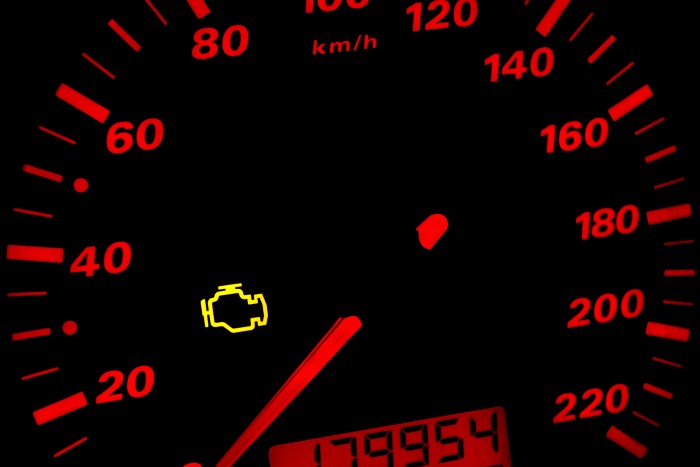
The check engine light in your Mazda is an important indicator that should not be ignored. When this light illuminates on your dashboard, it means that there is a potential issue with your vehicle’s engine or its related components. In this article, we will explore the significance of the Mazda check engine light and discuss the steps you can take to address it effectively.
Understanding the Check Engine Light
The check engine light, often represented by an icon of an engine, is designed to alert you to potential problems with your vehicle’s engine system. It is connected to the onboard diagnostic (OBD) system, which continuously monitors various sensors and components for any abnormalities. When the OBD system detects an issue, it triggers the check engine light to inform you that there is a problem that requires attention.
Common Causes of a Mazda Check Engine Light
The check engine light can be triggered by a wide range of issues. Some of the common causes include:
- Faulty oxygen sensor: The oxygen sensor measures the amount of oxygen in the exhaust gases and helps regulate the air-fuel mixture. A malfunctioning sensor can lead to decreased fuel efficiency and increased emissions.
- Loose or damaged gas cap: A loose or damaged gas cap can cause the fuel system to lose pressure, triggering the check engine light. Ensuring that the gas cap is tightened properly is a simple fix that can resolve the issue.
- Malfunctioning catalytic converter: The catalytic converter plays a crucial role in reducing harmful emissions. A failing catalytic converter can trigger the check engine light and may require professional repair or replacement.
- Issues with the mass airflow sensor: The mass airflow sensor measures the amount of air entering the engine. If it malfunctions, it can affect the engine’s performance and trigger the check engine light.
- Faulty spark plugs or ignition coils: Spark plugs and ignition coils are essential for the combustion process. If they are worn out or damaged, they can cause engine misfires and trigger the check engine light.
Diagnostic Tools for Identifying the Issue
To accurately diagnose the cause of the check engine light, it is essential to use diagnostic tools. These tools connect to the OBD system and retrieve error codes that indicate the specific problem. OBD scanners are widely available and can be used by both professionals and car owners to identify the underlying issue.
Addressing Minor Issues on Your Own
Some check engine light issues can be resolved without professional help. However, it is important to note that not all problems can be fixed by non-professionals. For minor issues such as a loose gas cap, you can tighten it yourself and see if the check engine light goes off. However, if the light persists or if you are unsure about the problem, it is best to consult a qualified mechanic.
Seeking Professional Assistance
When the check engine light remains illuminated or if you encounter other warning signs such as unusual noises or decreased performance, it is advisable to seek professional assistance. A certified Mazda technician will have the expertise and specialized equipment to diagnose and repair complex issues accurately. Ignoring the check engine light or attempting DIY repairs for major problems may lead to more severe damage and costly repairs in the long run.
The Importance of Regular Maintenance
Preventive maintenance plays a crucial role in keeping your Mazda in optimal condition and minimizing the chances of encountering check engine light issues. Regularly scheduled maintenance, including oil changes, filter replacements, and inspections, can help identify and address potential problems before they escalate. Adhering to the manufacturer’s recommended maintenance schedule is essential for the longevity and reliability of your vehicle.
Clearing the Check Engine Light
Once the underlying issue triggering the check engine light has been resolved, it is important to clear the error codes and turn off the light. This can be done using an OBD scanner or by disconnecting the battery for a short period. However, it is recommended to consult a professional technician to ensure that the issue has been adequately addressed and the light is reset correctly.
Conclusion
The check engine light in your Mazda should never be ignored. It serves as an important warning system that alerts you to potential issues with your vehicle’s engine. By understanding the common causes and taking appropriate action, you can address check engine light problems effectively. Remember to prioritize regular maintenance and seek professional help when needed to keep your Mazda running smoothly and efficiently.
FAQs
1. What should I do if my Mazda’s check engine light comes on?
If your Mazda’s check engine light comes on, it is advisable to first check if the gas cap is properly tightened. If the light persists, consult a qualified mechanic for a thorough diagnosis.
2. Can I continue driving with the check engine light on?
It is generally not recommended to continue driving with the check engine light on, especially if you notice other signs of engine problems. Continuing to drive may worsen the issue and potentially cause more damage.
3. How much does it cost to diagnose a check engine light issue?
The cost of diagnosing a check engine light issue can vary depending on the underlying problem and the labor rates of the repair shop. It is best to contact a few trusted mechanics for estimates.
4. Can a check engine light issue affect fuel efficiency?
Yes, a check engine light issue, such as a faulty oxygen sensor or spark plugs, can negatively impact fuel efficiency. Resolving the problem can help improve fuel economy.
5. Is it possible for the check engine light to turn off on its own?
In some cases, the check engine light may turn off on its own if the issue that triggered it is no longer present. However, it is still recommended to have the vehicle inspected by a professional to ensure there are no underlying problems.






